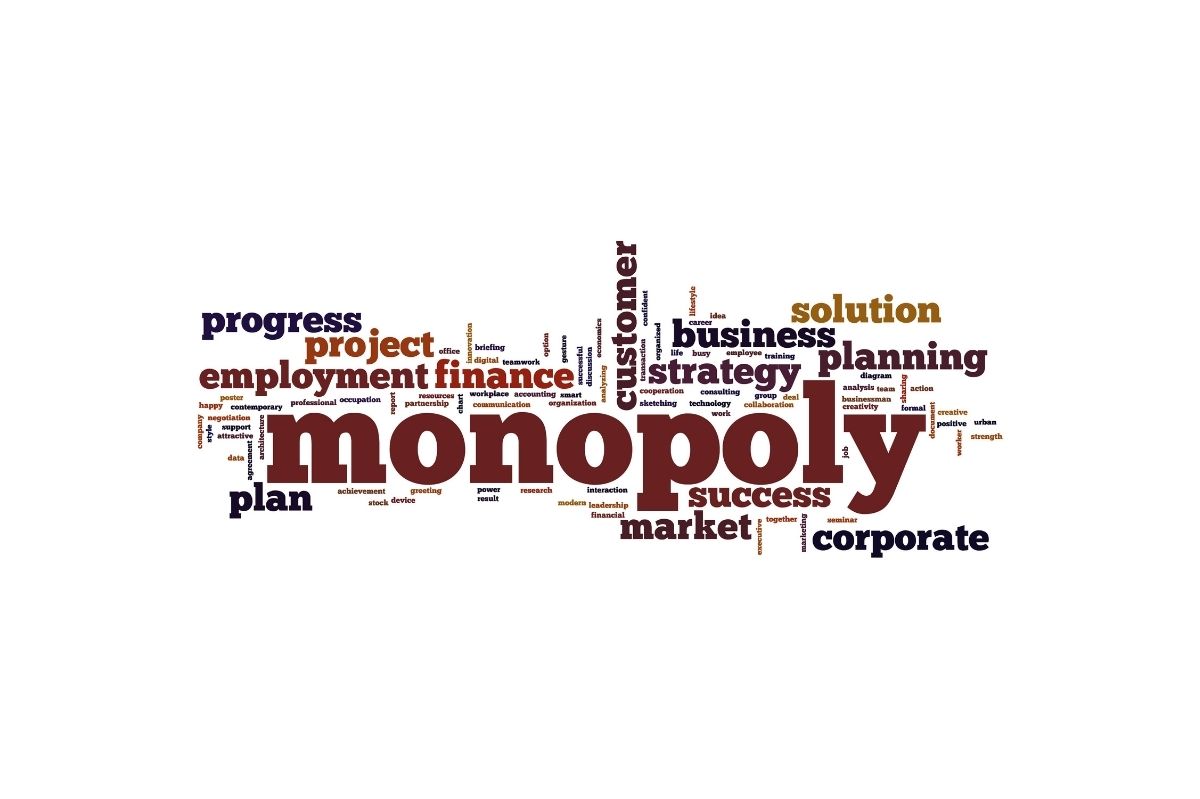The terrible thing about platform monopoly lies in the “digital real estate” bubble, and the more terrible monopoly is a monopoly that does not end the cycle.
The day before “Double 11”, the State Administration of Market Supervision published the “Guidelines for Anti-Monopoly in the Field of Platform Economy (Draft for Comment)”, which for the first time put the monopoly of Internet super-platforms on the stage of supervision.
When it comes to the term “monopoly,” most people definitely hold a negative impression. Monopolists seem to have their own original sin. However, in the technology and Internet industry, the monopoly issue must be divided into two, and conclusions cannot be drawn with one stick.
In order to explain this issue, we can divide the “monopoly of technology Internet companies” into the first half and the second half.
- The first half: How does the monopoly of technology Internet companies form, that is, the reason for the monopoly;
- The second half: If they form a monopoly, what impact will they have, that is, the result of the monopoly.
Let’s first look at the reasons for the formation of monopolies. In economics, monopolies are divided into four types:
- Natural monopoly: The cost of production makes one producer more efficient than a large number of producers. This is the most common form of monopoly.
- Resource monopoly: key resources are owned by one company.
- Administrative monopoly: The government gives an enterprise the exclusive right to produce a certain product or service.
- Monopoly: The government has its own monopoly.
The monopoly of technology Internet companies, at least in the two major markets of China and the United States, is a natural monopoly. In other words, most technology monopolies do not rely on the government or an interest group to control a certain core resource or monopoly power to monopolize the market.
Monopoly is formed naturally. If one word is to explain the natural monopoly of technology Internet platforms, the most appropriate one is the “winner takes all principle”, which originated from the US presidential election.
Everyone knows that the President of the United States is elected by a vote. However, according to the US Constitution, voters in each state in the United States actually choose not the President, but the electors of that state. The President of the United States is actually an elector entrusted by the voters to represent that state. The state voted, finally elected.
We now see Biden’s vote for Trump, 306 votes to 232 votes, which is the number of votes of electors in each state. Whoever can get the votes of 270 electors first can become president.
Most states in the United States use the “winner-takes-all system” when determining the number of voters. Assuming that a continent has 30 electoral votes, if 60% of the voters in that state elect Biden as president, then All 30 electoral votes in the state go to Biden, instead of 18 to 12.
Technology Internet Companies Rely On Winner-Takes-All And Naturally Monopolize The Market.
As we discussed in “How the Biden Administration Affects the Global Technology Industry”, the competition in the technology industry is governed by “decreasing marginal costs” and “Metcalfe’s law.” The more advantages it has, the higher the value of its products and services.
As a result, in this industry, the final winner must be a monopolist, at least an oligopoly. A typical situation is this.
The first place in the market controls the vast majority of the market, occupying, for example, 70% of the market, and the second place accounting for 20%. Other competitors may add up to less than 10%.
Because of the small-scale competitors, their price service capabilities are completely uncompetitive.
This situation can be seen everywhere. In the desktop operating system, players only have Microsoft Windows and a lesser part of the market MacOS; in the mobile operating system, it is Android and iOS; in the search engine, the Chinese and American markets are almost monopolized by one company Google and Baidu; in the social field, the United States is Facebook and Twitter, while China is the only one of WeChat.
In fact, if a market does not determine a monopolist, then the market must be fiercely cut-throat competition, such as the “Thousand Regiments War” in the field of group purchases, and even the later shared bicycle war “ofo vs. Mobike”.
As long as the competition is not over, the battle will not stop. In the business plan, a basic requirement is that there is no monopolist in the market, that is, the so-called “market concentration is not high.” Therefore, in the end, the market cannot be sustained, and the remaining monopolist “the leftover is the king.”
The above is the first half of the monopoly story-the cause of monopoly.
And then, is the second half of the monopoly story-the result of the monopoly.
From the perspective of the causes of monopoly, we can first conclude that the monopoly of the Internet of science and technology is perhaps the most “pure” monopoly of genes.
They do not have a resource monopoly like the oil industry, nor do they hold a license plate like the local taxi industry back then (until now, online car-hailing is still a gray identity in some cities), and they are not like tobacco companies that hold monopoly rights.
Therefore, in several monopolistic situations, technology Internet companies are relatively capable of doing things. In other words, the monopoly of the Internet of science and technology is relative to “the worst” kind of monopoly.
Even under certain circumstances, consumers can benefit from a monopoly. For example, Microsoft Windows relied on the monopoly of the operating system and bundled the free IE browser, defeating the Netscape browser, which was priced at several hundred dollars at the time. At least at that time, if it weren’t for Microsoft, the browser would still be a paid software.
However, the fact that “nature” is not bad does not mean that the result is not bad.
If we roughly divide commerce into upstream, midstream, and downstream, taking the e-commerce industry as an example, suppliers and sellers are upstream, Internet e-commerce platforms are midstream, and consumers are downstream.
Most super-tech Internet platforms are located in the middle reaches of the industrial chain, or, fashionably speaking, the middle stage of the industry. This middleman, who serves as a transaction matching agent, looks down on the upstream and downstream with a huge body.
These Internet middle stations have a great say both upstream and downstream. And their control of the upstream is more worrying than the monopoly market share of consumers.
Take the policy supervision on the eve of “Double 11” as an example, its essence is aimed at the “choose one” problem of super-platform promotion-if you cooperate with other e-commerce platforms for promotion, you can’t cooperate with me. Another example is logistics. If you want to deliver to my consumers, you must connect to my logistics network and even my capital injection.
If you take the real business world as an example, at least the nature of many Internet platforms is actually more similar to real estate developers. Their business model is more similar to collecting land rent. If you don’t cooperate with me, you won’t be given a good location, or you can’t do business in my location. And “real estate” is too powerful, and it must be bad for the industry. This has been verified in the real economy.
This situation has happened to the extreme. In such a business world, upstream companies that provide “industrial services” do not have any right to speak. In principle, they only act as “distribution channels”, and the middlemen who feed the capital make the biggest difference.
Consumers seem to be making money every day, but in fact, they are just making the so-called 20 yuan “cheap” of “raising the original price of 50 yuan to 100 yuan, and then reducing the price to 80 yuan”.
There is no doubt that these naturally formed monopolies do require supervision.
But the difficulty lies in how to supervise.
We are willing to repeat that the monopoly of technology Internet companies is the “worst-worst” kind of monopoly by nature.
- Natural monopoly: The cost of production makes one producer more efficient than a large number of producers. This is the most common form of monopoly.
- Resource monopoly: key resources are owned by one company.
- Administrative monopoly: The government gives an enterprise the exclusive right to produce a certain product or service.
- Monopoly: The government has its own monopoly.
In the above form, the natural monopolist has no resources, administration, or monopoly profit, and relies on the ability to operate.
The Internet Of Science And Technology Was Once The Most Open Market For Competition.
At least in China, this market was not regulated for a time, but it has created a miracle for China’s digital economy. On the contrary, various industries such as automobiles with various regulations and various license plates, under heavy protection, almost have no right to speak in the global industry, so that new powers from the Internet of science and technology are needed to save the situation.
Therefore, if a certain kind of supervision method is to award the first type of natural monopoly market resources to the other three types of monopolists, it can almost be the worst case.
The answer to the regulatory question may come from the openness of data.
In the era of the digital economy, data is the core means of production, and it is data that monopolists monopolize.
But how to open the data is another problem. Because data contains massive and vital consumer privacy. We cannot give the monopolist’s data to a so-called credible third party, no matter what type of capital this third party is, or how credible it looks.
We also cannot split the giants and reduce their data to zero. Because the removal of the first monopolist will only make the second monopolist the new monopolist again.
The key to the problem lies in the data, and the data cannot be made public, and the problem has become an endless loop here.
In fact, the only law to challenge the monopoly of high-tech Internet companies is not supervision, but innovation.
Because even if there is no supervision, the monopolist cannot monopolize for a long time. The US Department of Justice wanted to split Microsoft but failed to do so, but Microsoft did not keep the monopoly and gave way to Apple in the mobile Internet era.
Otherwise, wouldn’t the world only have all kinds of century-old shops?
Promoting new and more efficient new models is the best way to challenge the monopolist.
For the technology Internet industry, monopoly is the inevitable competition, and supervision can only happen after monopoly.
Therefore, what we can do more is to let innovators continue to appear, shorten the monopoly cycle of giants as much as possible, and allow upstream and downstream to enjoy a relatively longer competition cycle.
However, innovation cannot be achieved through supervision. The answer to the problem
is not the answer itself, but outside the answer. In the face of giants, we must respect the soil and culture of innovation.
Finally, we have to emphasize one conclusion.
The inevitable monopoly of technology companies is not the most terrible thing. At least it has a cycle. The monopoly based on license resources is even more terrible because there is no cycle at all.
Also Read : 11 Unknown Useful Features Of Google Maps







